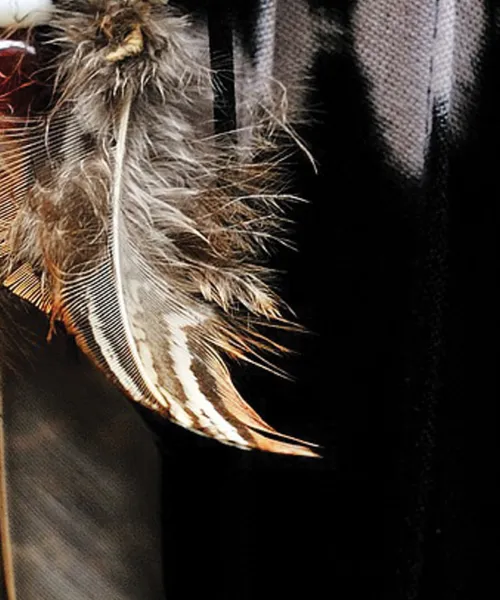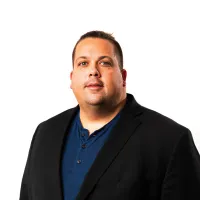Improving Tribal Health
by Kristi Evans
Two of the five federally recognized tribal governments located within the Upper Peninsula are among the entities partnering with the NMU Center for Rural Health on its development grant addressing diabetes education, prevention and treatment. Both have made positive strides in the public health arena. To meet the significantly increased demand for health and wellness services that followed passage of the Affordable Care Act, Bay Mills Indian Community recently broke ground on its new Ellen Marshall Health Center. The $14 million, 33,000 square foot state-of-the-art project is scheduled for completion in January 2022. The Lac Vieux Desert Band of Lake Superior Chippewa, which has an established health center offering comprehensive care to tribal citizens and western U.P. residents, expanded its service region with a clinic near Eagle River, Wis.
Their partnership with the NMU Center for Rural Health will address Type 2 diabetes, a condition that is more common among Native Americans than any other ethnic group, according to the CDC. Increased risk factors associated with this and other medical conditions, combined with higher rates of depression and suicide, contribute to elevated mortality rates. A 2019 federal Indian Health Service fact sheet noted that the average life expectancy for American Indians/Alaska Natives is 5.5 years less than the rest of the U.S. population.
Tyler Migizii Migwan LaPlaunt ’13 BS, ’15 MS is well-acquainted with these disparities, how they are compounded by broader rural health issues and the obstacles that make it challenging to effectively address them. After completing two NMU degrees in management of health and fitness and exercise science, most of his professional career has been dedicated to improving the physical and mental well-being of Native Americans.
LaPlaunt was a community health educator for the Sault Ste. Marie Tribe of Chippewa Indians, of which he is a citizen. He later served as program director of the Great Lakes Inter-Tribal Epidemiology Center, where he administered a grant supporting cultural prevention strategies designed to increase access to Indigenous nutritious foods and opportunities for physical activity while decreasing the use of commercial tobacco.
In his role as executive director of the Great Lakes Area Tribal Health Board, LaPlaunt assisted in identifying and addressing health disparities for all 34 tribes in the Bemidji Area of Michigan, Wisconsin and Minnesota. He is now assistant director of Upper Peninsula Health Care Solutions, working with the broader U.P. population administering public health grants and group purchase agreements with hospitals and clinics.
“Most people hear about Native Americans and metabolic, preventable diseases like diabetes or health issues related to tobacco and substance use. Actually, the highest risk right now is heart disease and hypertension,” LaPlaunt said. “Cancer is also a major concern, primarily related to the digestive system—stomach, esophageal and colon.”
On a federal level, the Indian Health Service reports that American Indians and Alaska Natives have higher mortality rates than other Americans in many categories, including chronic liver disease and cirrhosis, diabetes mellitus, unintentional injuries, assault/homicide, intentional self-harm/suicide and chronic lower respiratory diseases.

“The biggest obstacle to improving health outcomes is limited financial resources,” LaPlaunt said. “When the tribes in this region signed their treaty rights, they transferred millions of acres of land with assurances of lifetime education and health care. Indian health services in the Bemidji Area are only funded at 38-42% of their level of need by the federal government. Some tribes can subsidize that through enterprises like casinos, hotels and golf courses. But tribal communities are constantly having to put money toward patient treatment instead of preventative care, developing food systems infrastructure and other proactive improvements that could reduce the health disparities.”
Access to health care is another issue confronting Native Americans. LaPlaunt said most tribal communities have clinics offering primary care and diabetes treatment, with nutritionists and some traditional healers on staff. They rely heavily on partnerships for specialty services, cardiovascular care and rehab, physical therapy and cancer treatment. He said there is no ambulatory or emergency care among Michigan’s tribal communities. The NMU Center for Rural Health will include tribal partners Bay Mills and Lac Vieux Desert in efforts to recruit and retain EMS personnel in the Upper Peninsula, in addition to the diabetes component, as part of its development grant.
The Center for Medicare and Medicaid Services (CMS) Division of Tribal Affairs works closely with American Indian and Alaskan Native communities “to enable access to culturally competent healthcare,” according to its website. With their elderly populations and higher rates of poverty, LaPlaunt said tribal people rely heavily on Medicare and Medicaid reimbursements.
“The majority of tribal health care funding comes through CMS, which is a federal program, but states have the independent authority to adopt state plan amendments, ultimately allowing or not allowing the extension of certain federal CMS programming and funding mechanisms. Because of that, states can act more as a barrier sometimes. Michigan is built entirely on tribal land, and only became a state by the signing of the Treaty of Washington in 1836. There’s been an effort the last couple years for the state government to do more outreach with the tribes and work to repair the relationships.”
LaPlaunt said efforts to promote the benefits of physical activity and walkable communities, and to address transportation issues that limit access to needed care, would benefit not only tribal citizens, but all U.P. residents.

